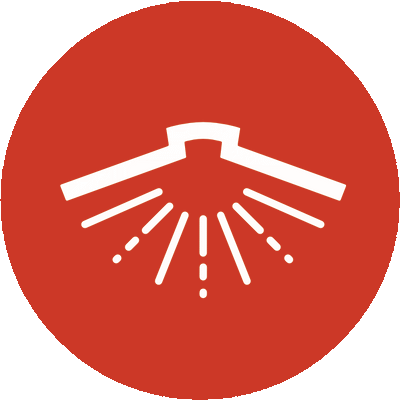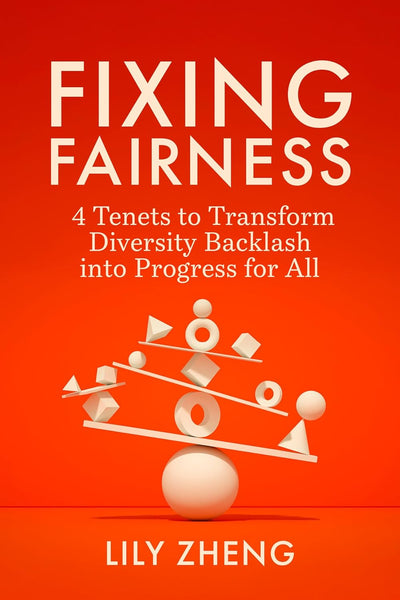Leading the Future of Work: Experts Everywhere, All the Time, Online Labor Markets, and Flash Teams
Organizations can now assemble exactly the expertise they need within minutes from online labor markets. What does it mean—for managers and employees, and the future of work—when a company's geographical location no longer confines its access to talent? Find the answer in this new piece from two Stanford University Professors who authored the new book, Flash Teams.
To begin, Mark had nothing but an idea.
Then, within a few weeks, the idea had become a working app—one that solved a major problem at his job. He brought that app to life with a team of more than thirty designers, user researchers, and software engineers from around the world. You might guess that, to turn his idea into a functional, user-tested piece of software in just weeks, Mark had the ability to divert a top team from his company onto the project. But, no—there was no team at the outset. Instead, Mark started from scratch and assembled those thirty diverse experts as the project demanded them, each one joining within minutes in response to his call.
Mark is not a startup founder or a high-powered executive. If you push him on it, Mark will admit that he actually has no engineering or product background at all. He’s a doctor in the emergency room, and he decided to create an on-demand team when he noticed a concerning but solvable issue at the hospital where he works: until the back doors of an ambulance opened, the emergency room staff had no idea what was coming their way.
Like many of us, he saw a problem and had an idea for how to solve it: “Surely we shouldn’t be waiting until the ambulance actually arrives for the E.R. to spring into action? What if first responders could let the hospital know in advance what is coming in the ambulance?” Mark envisioned a mobile app that ambulance drivers could use to report trauma cases while en route to the hospital, and a paired wall display in the E.R. that visually displayed incoming cases.
Mark didn’t stop at the idea, though—and this is where the story of this book begins. Instead, using tools and techniques that we developed in our research labs at Stanford University, Mark assembled and led an on-demand team that produced a fully functional, user-tested prototype of the app and a paired display for the hospital, all within six weeks.
Mark’s a doctor, so he didn’t know how to hire or manage software developers on a new product. He also didn’t know what to do when the feedback on his first prototype revealed that he would need to dramatically redesign the application. Or what to do when he realized that he needed to ensure compliance with HIPAA around medical data privacy. Or even what to do when he realized that he needed marketing materials to help funders and users know about the app. But still he began, using an approach that we developed to quickly adapt and collaborate with a global team of experts to achieve his goal.
ON-DEMAND, COMPUTATIONALLY POWERED TEAMS
We call these on-demand, computationally powered teams flash teams, and they hold lessons for every manager and for the future of work. Until now, problem-solvers like Mark were accustomed to working with teams that are overly constrained, resistant to change, and slow to learn. We recruited Mark as an entrepreneurial user who wanted to learn flash teams, and like him, we now similarly aim to show you how to take advantage of a global remote workforce and artificial intelligence (AI) to create teams that are the exact opposite: flexible, rapid, and adaptive. Flash teams:
- Recruit exactly who is needed, within minutes, from a global remote workforce
- Pivot rapidly when contingencies inevitably arise
- Apply AI to help recruit the right people, evolve, and manage the team
We are professors at Stanford University, where we’ve brought together the bleeding edge of management science with computer science to create opportunities for flash teams like Mark’s to achieve these goals. One of us, Melissa Valentine, is a management scholar: she studies what makes teams work in the digital age. The other, Michael Bernstein, is a computer scientist: he builds platforms that bring people together. We were both young assistant professors when an enterprising PhD. Student named Daniela Retelny Blum heard separate research talks from the two of us and realized that we really ought to be talking to each other. Those initial conversations launched us on a path that has reshaped how we think about the future of work, and we have a hunch that it will change your perspective too.
The flash team from Mark’s story, as well as the tools and skills that he mastered, are rapidly emerging as the future of teams and teaming. Gone are the days of static organizational charts and staffing based on the manager’s own rolodex. AI, remote work, and online platforms are transforming how teams work. You can recruit any expertise you need from a global online network: an on-demand, on-the-spot expert at the exact moment that you need their help. You can right-size each person’s involvement: some of those experts offer a second opinion or a moment of brainstorming, while others join as full-fledged team members for a sustained collaborative effort. You can craft an organizational chart that reshapes itself and adapts based on data.
A decade of our research has exposed the aging, creaky old infrastructure, assumptions, and adages about how to hire, how to onboard, how to collaborate, and how to manage. Lessons from flash teams invite us to reconsider: what can we create today? How can we manage teams more effectively? And what role do new technologies play in enabling these teams of the future?
WHAT FLASH TEAMS MEAN FOR ORGANIZATIONS AND THE FUTURE OF WORK
You can win a Nobel Prize by explaining why flash teams might spring into existence. Economist Ronald Coase did. In the 1930s, Coase posed a now-famous question that founded an area in economics known as “theory of the firm.”1 Why, he asked, do we have organizations instead of just hiring whoever we need out of a marketplace of contractors? Coase foresaw that a single global marketplace could give you access to whatever expertise you need. He reasoned that, to the extent that markets are efficient, it should always cost less to contract work than to hire someone. But—aha!—Coase reasoned, the literal cost of the work is not the only cost that you bear. You have to go search for a good person in the marketplace, and you need to spend time securing a contract with them. These search and contracting costs aren’t zero, because they take you time and effort. These costs can, in fact, be huge. So, Coase argued, we have organizations because it’s cheaper to have ongoing employment contracts with a huge group of employees than to search and contract for every new thing you need done.
Today, those costs have shifted with internet and data technologies: searching and hiring is much less time, effort, and money. That shift is the fundamental reason why flash teams could not exist before and can exist now. Suddenly, search can be nearly free and instantaneous: online marketplaces provide search products that match you with workers given just a description of what you need. Contracting can also be nearly free and instantaneous: these same platforms allow workers to advertise their rates, and the platforms provide contract guarantees. The platforms offer application programming interfaces (APIs), which allow employers to write programs to search, contract, and hire at blazing speeds. When search and contracting are cheap, Coase’s theory tells us that people will begin to use marketplaces where they previously used organizations.
We are of course already seeing these shifts. Management scholar Gerry Davis of the University of Michigan has been reading these tea leaves for over a decade. In The Vanishing Corporation, he writes about the following key trend:2
- Between 1996 and 2015, the number of American corporations listed on US stock exchanges declined from 8,000 to a bit over 4,000.
- In 2015, “The combined workforces of Facebook, Yelp, Zynga, LinkedIn, Zillow, Tableau, Zulily and Box were smaller than the number of people who lost their jobs when Circuit City was liquidated in 2009.”3
Davis argues that the larger reduction in traditional corporations is related in part to newer digital technologies such as online labor markets and related organizing models such as flash teams. Large sprawling corporations such as Sears, US Steel, and General Motors made sense under old technological assumptions. But the changing technology landscape is changing the nature of organizations. As Coase’s work suggests, the costs that made it natural to bring people into organizations permanently may be shifting to favor alternative forms of organization such as flash teams.
As is common, the first actors to move on this insight and trend have been individuals, small organizations, and startups. They are scrappy and open to new ideas. We have personally seen startups draw on online labor markets for business plans, designs, and engineering. It can be a compelling picture: imagine your small local business elastically growing to ten or more contributors when needed in crunch times.
Slower though they may be, larger organizations are recognizing this opportunity as well. Freelancing platform Upwork advertises that Microsoft, Airbnb, Bissell, and Nasdaq all have enterprise contracts with their platform, enabling them to hire from Upwork’s freelancers. Our own employer, Stanford University, has such a contract. The enterprise contract that Stanford lawyers hammered out with Upwork lawyers ensures that Stanford remains compliant with California labor laws as it hires freelance work through the platform. Our executive education program, our alumni office, and several other professional and administrative groups at Stanford have hired freelance workers through this effort.
Understanding flash teams starts with this simple mindset shift: experts are everywhere, all the time. In the traditional US labor market, we have been trained to adopt a mindset of expert scarcity: there are very few experts your company can hire, and if you need another one, it will take weeks or months of time and piles of red tape to hire them. Understanding flash teams means turning that perspective upside-down to a mindset of expert abundance: that whatever the expertise or skill is that you need, it’s probably available, and you can probably get access to it quickly.
In the same year that we published our first flash teams study, it took a typical firm in the United States 14 to 25 days to fill a new hire.4 Our research asked: What if those 14 to 25 days could become 14 to 25 minutes? Suddenly, leaders could start making different decisions. And if those hires could offer deeper skills than what firms could get through a traditional hiring process, those decisions will start looking very, very different indeed.
We’ve both demoed this idea in our classes. Valentine would introduce a flash teams lecture by saying to the student teams, “You need to get a professionally sourced team logo by the end of this 80-minute class.” She would then show them how to search and hire in an online labor market that had millions of contractors. Going from idea to an expertly produced team logo within a single class period seemed crazy to the students at first, but in the years that Valentine did this exercise, every team of students easily hired a graphic designer who created a team logo for them (using class funds) before the end of the class period.
Bernstein does another demo. He decided to use Cameo, an online marketplace where anyone can hire actors and celebrities to record short custom videos, to hire actor Chris Diamantopoulos to record a personalized message for the class. Chris played billionaire investor Russ Hanneman on HBO’s show Silicon Valley, and Bernstein hired him to record a video comparing his fan interactions on social media versus Cameo for the class. It was ready the next day.
These demos, which convene only single experts, are intended as fun illustrations of the speed with which experts can be found, but the truly exciting potential of these technologies comes when you can convene teams of specialized experts.
WHAT’S NOT YET POSSIBLE WITH ONLINE LABOR MARKETS
If nearly any job that can be done over a computer will be in these markets, the inverse is also true: if it can’t be done over a computer, it’s less likely to be found online yet. For example, you’re less likely to see a metalworker, or an HVAC professional, or an arborist, on these platforms. Folks would be more likely to consult local listings by going to Yelp or similar platforms.
This isn’t a firm boundary: The TaskRabbit platform offers this kind of service, though it’s constrained to local experts given the requirement that someone actually show up at your home or work. Likewise, we might think of online crafting marketplaces like Etsy as a kind of online labor market. However, Etsy is framed more as a shop than as a labor market: meaning, I can buy things on Etsy, but it’s less straightforward to hire one of the creators on Etsy to take on a contract position in my organization. Overall, it’s just harder to create digital-first organizations that have substantial requirements for in-person collaboration or physical materials that need to be shipped around. It’s doable, just difficult. For now, hiring local help is outside the domain for which we recommend flash teams.
A final note: There are several platforms that are essentially online job boards, including Indeed, LinkedIn, and Monster. It is possible to draw on these platforms to hire experts for flash teams, but they are not your best bet. Work on those platforms is focused on traditional employment rather than flash teams. In addition, the platforms themselves don’t natively support contracting or payment, which are a big advantage of the platforms devoted to creating flash teams.
“EXPERTS EVERYWHERE” IS ABOUT MORE THAN JUST ONLINE LABOR MARKETS
Our book Flash Teams details how online labor markets work and what kind of talent you will find there, with many examples of how quickly you can search and hire from online labor markets, but the mindset shift to recognizing that there are experts everywhere, all the time is much broader than that. Calling on expertise may be as simple as looking within your own company. When studying a data science team at a San Francisco tech company, Valentine observed them creating many mini-flash teams on the fly. The core project team called in a data scientist assigned to another team who was an expert on causal inference, then another who was expert on the company’s data model, and then a third with specific expertise in user interface design. All of those collaborators were full-time employees deployed on other projects but they were able to temporarily join forces with this core team to help apply their expertise to specific problems.5
Notice the same pattern in a series of patient case meetings we observed at an academic cancer center.6 A doctor and a project manager would figure out all of the experts who might be helpful on a complex patient case—oncologists in other specialties, pain management specialists, dermatologists, nutritionists, social workers, clinical trial administrators, financial services, or palliative specialists, for example—and would convene the relevant group for a few minutes to discuss each patient case. The experts for each specific case might be different, but this integrative care program showed that different groups of specialists (i.e., flash teams!) could be flexibly convened to consult on complex patient cases at these short, focused cross-functional meetings. For those meetings, the cancer center staff were the ones convening the bespoke sets of experts for each patient case, but we also often see patients and families find and coordinate teams of experts through their own informal work.7
You can think of secondments or job rotations through this lens of experts everywhere. In a secondment, a company temporarily redeploys an employee to a new position that asks them to focus on a new project, client, or skill set. Notably, the employee can keep their same salary and benefits and return to their original job. As an example, the software company Atlassian sponsors secondments for some of their employees. They temporarily redeployed a product marketer into a marketing analytics team, which she and they found to be an invaluable learning experience.8 Meta, the parent company that makes Facebook and Instagram, also features a “Hackamonth” sabbatical system that rotates their engineers temporarily onto other teams.
We all now live and work in a highly specialized and expert economy, and our internet and communication tools make it possible to find and draw on these experts like never before. Whether you searching for relevant experts in the formal labor markets, or in a company’s knowledge management systems, or through a quick post to your social media accounts (“Hey hivemind, recommend a good contractor?”), you are likely constantly searching for and creating constant moments of expert collaboration. As professors, we get a lot of requests to offer our ideas or expertise, and thanks to our research, we have a unique vantage point. All it takes is a bit of a nudge to more aggressively reach out to the resources that are available in your business life.
Regardless of the infrastructure you use, flash teams will change the world. They will be used to create, to build, and to inspire. They will offer opportunities to entrepreneurs who need rapid expertise, to large businesses that seek to be nimbler, and to anyone else who has an important problem to solve.
That’s the broader vision: if you think of experts as being everywhere, the lessons from flash teams can help any manager of any project, no matter how they’re defined. You’ve got a deep bench of talent. Use it.
Adapted from Flash Teams. Copyright © 2025 Melissa Valentine and Michael Bernstein. All rights reserved.
About the Authors
Melissa Valentine is Associate Professor of Management Science at Stanford University, where she codirects the Center for Work, Technology, and Organization. She has been awarded an NSF CAREER award, and her work has been featured in The New York Times, The Wall Street Journal, Harvard Business Review, Wired, Fast Company, and Financial Times.
Michael Bernstein is Associate Professor of Computer Science at Stanford University, where he is a Bass University Fellow. His research has been reported in venues such as The New York Times, Wired, Science, and Nature, and he has been recognized with an Alfred P. Sloan Fellowship, UIST Lasting Impact Award, and the Computer History Museum’s Patrick J. McGovern Tech for Humanity Prize.









